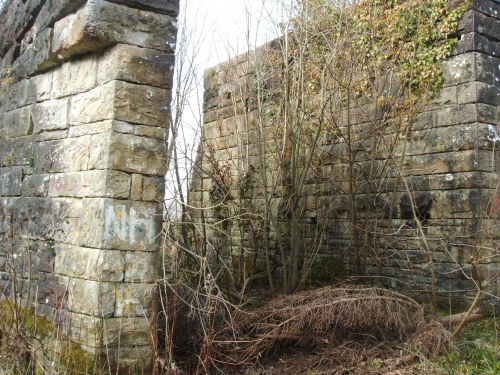Robin Hood Colliery (Flimby): Difference between revisions
m (Text replacement - ".</p><div class="no-img">" to ".</p> <div class="no-img">") |
mNo edit summary |
||
| Line 1: | Line 1: | ||
__NOTOC__{{PnItemTop|Lat={{DecDeg|54|41|21|N}}|Lon={{DecDeg|3|29| 22|W}}|AdmDiv=Cumberland|Vicinity=''c.'' 1.7 km ENE of Flimby, in Flimby Great Wood|Type=Establishment|Interest=Robin Hood name|Status=Defunct|Demonym=|Riding=|GreaterLondon=|Year=1855|Aka=|Century=|Cluster1=Flimby|Cluster2=|Cluster3=|Image=robinhoodcolliery-flimby-tramway-rope-winding-house.jpg|Postcards=|ExtraCat1=|ExtraCat2=|ExtraCat3=|ExtraCat4=|ExtraCat5=|ExtraLink1=|ExtraLink2=|ExtraLink3=|ExtraLink4=|ExtraLink5=|ExtraLinkName1=|ExtraLinkName2=|ExtraLinkName3=|ExtraLinkName4=|ExtraLinkName5=|GeopointPrefix=|GeopointSuffix=|StatusSuffix=|DatePrefix=|DateSuffix=}} | __NOTOC__{{PnItemTop|Lat={{DecDeg|54|41|21|N}}|Lon={{DecDeg|3|29| 22|W}}|AdmDiv=Cumberland|Vicinity=''c.'' 1.7 km ENE of Flimby, in Flimby Great Wood|Type=Establishment|Interest=Robin Hood name|Status=Defunct|Demonym=|Riding=|GreaterLondon=|Year=1855|Aka=|Century=|Cluster1=Flimby|Cluster2=|Cluster3=|Image=robinhoodcolliery-flimby-tramway-rope-winding-house.jpg|Postcards=|ExtraCat1=Collieries named after Robin Hood|ExtraCat2=|ExtraCat3=|ExtraCat4=|ExtraCat5=|ExtraLink1=|ExtraLink2=|ExtraLink3=|ExtraLink4=|ExtraLink5=|ExtraLinkName1=|ExtraLinkName2=|ExtraLinkName3=|ExtraLinkName4=|ExtraLinkName5=|GeopointPrefix=|GeopointSuffix=|StatusSuffix=|DatePrefix=|DateSuffix=}} | ||
{{#display_map:{{#var:Coords}}|width=34%}}<div class="pnMapLegend">Robin Hood Colliery a.k.a. Flimby Colliery.</div> | {{#display_map:{{#var:Coords}}|width=34%}}<div class="pnMapLegend">Robin Hood Colliery a.k.a. Flimby Colliery.</div> | ||
[[File:robinhoodcolliery-flimby-tramway-rope-winding-house.jpg|thumb|right|500px|Remains of tramway rope winding house at Robin Hood Pit / Anonymous, via [http://www.cumbrianrailways.org.uk/fieldtrips.html. Cumbrian Railway Association.]]] | [[File:robinhoodcolliery-flimby-tramway-rope-winding-house.jpg|thumb|right|500px|Remains of tramway rope winding house at Robin Hood Pit / Anonymous, via [http://www.cumbrianrailways.org.uk/fieldtrips.html. Cumbrian Railway Association.]]] | ||
| Line 33: | Line 33: | ||
* [http://www.dmm.org.uk/news18/8961210.htm Durham Mining Museum: Whitehaven News, 10th December 1896, Fatal Accident At Robin Hood Pit.] | * [http://www.dmm.org.uk/news18/8961210.htm Durham Mining Museum: Whitehaven News, 10th December 1896, Fatal Accident At Robin Hood Pit.] | ||
* [http://discovery.nationalarchives.gov.uk/details/rd/0a320ae7-1d11-4214-82e5-a85799f3e3aa National Archives: Robin Hood Colliery, Distington.] | * [http://discovery.nationalarchives.gov.uk/details/rd/0a320ae7-1d11-4214-82e5-a85799f3e3aa National Archives: Robin Hood Colliery, Distington.] | ||
{{PnItemAlsoSee}} | |||
=== Notes === | === Notes === | ||
<references/> | <references/> | ||
| Line 42: | Line 39: | ||
</div> | </div> | ||
{{PnItemNav}} | {{PnItemNav}} | ||
Revision as of 00:19, 25 May 2018

By Henrik Thiil Nielsen, 2017-02-24. Revised by Henrik Thiil Nielsen, 2018-05-25.
The Robin Hood Colliery in Flimby was in operation from 1855 to 1909. Wilson & Harris of Darlington sank the Robin Hood Pit (1) in Flimby in 1855.[1] At that time or at some later point operation began at a further pit, Robin Hood Pit (2). Sometime after 1867 this was connected via a tramway with Seatonmoor Colliery, located about 800 m south.[2] Operation at the first Robin Hood Pit ended on 14 Nov. 1908 and that at the second pit already in December of 1897 when the seam was found unworkable on account of faults. Robin Hood Pit 1 was located in Flimby and Seaton parishes, but Robin Hood Pit 2 in Flimby only.[3] As Seaton is south of Flimby, this would indicate that pit 2 was located north of pit 1, and the "Robin Hood Pit" indicated on the early 6" O.S. maps (see maps section below) would therefore have been Pit 2. I do not know the location and extent of pit 1, but it may have been close to Seatonmoor Colliery.
Gazetteers
- Not included in Dobson, R. B., ed.; Taylor, J., ed. Rymes of Robyn Hood: an Introduction to the English Outlaw (London, 1976), pp. 293-311.
Sources
- Durham Mining Museum: Flimby Colliery
- Durham Mining Museum: Flimby & Broughton Moor Coal & Firebrick Co. Ltd.
- Durham Mining Museum: Catalogue of Plans of Abandoned Mines for Flimby Colliery.
- West Coast Energy: Flimby WInd Farm, Environmental Statement, vol. 1: Written Text, p. 9–14 (PDF; may take a while to load).
Maps
- 6" O.S. map Cumberland XLV (1867; rev. 1864-65)
- 6" O.S. map Cumberland XLV.SW (1900; rev. 1899)
- 6" O.S. map Cumberland XLV.SW (1900; rev. 1899) (georeferenced)
- 6" O.S. map Cumberland XLV.SW (1927; rev. 1923)
- 6" O.S. map Cumberland XLV.SW (c. 1933; rev. 1923)
- 6" O.S. map Cumberland XLV.SW (c. 1945; rev. 1923)
- 6" O.S. map Cumberland XLV.SW (c. 1949; rev. 1947)
- Durham Mining Museum: Flimby Colliery 1862.
Background
- Durham Mining Museum: Whitehaven News, 5th October 1893, Accident At Robin Hood Colliery
- Durham Mining Museum: West Cumberland Times, 1st June 1895, Settlement Of the Dispute at Robin Hood Colliery
- Durham Mining Museum: West Cumberland Times, Article from the West Cumberland Times, 12th June 1895
- Durham Mining Museum: Whitehaven News, 22nd August 1895, Serious Mishap At Robin Hood Collie
- Durham Mining Museum: Whitehaven News, 10th December 1896, Fatal Accident At Robin Hood Pit.
- National Archives: Robin Hood Colliery, Distington.
Notes
- ↑ West Coast Energy: Flimby WInd Farm, Environmental Statement, vol. 1: Written Text, p. 9–14 (PDF; may take a while to load).
- ↑ West Coast Energy: Flimby WInd Farm, Environmental Statement, vol. 1: Written Text, p. 9–16 (PDF; may take a while to load); and see maps listed below.
- ↑ Durham Mining Museum: Catalogue of Plans of Abandoned Mines for Flimby Colliery; Durham Mining Museum: Flimby Colliery.
